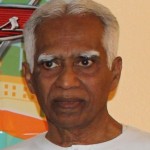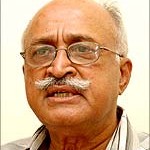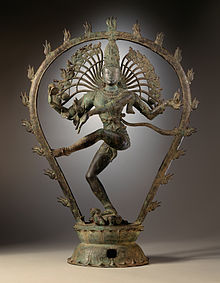Ms. Navanethem “Navi” Pillay has impressive credentials. A South African of Indian Tamil origin, she is the United Nations High Commissioner for Human Rights. She was also the first non-white woman on the High Court of South Africa, and she has also served as a judge of the International Criminal Court and President of the International Criminal Tribunal for Rwanda.
She attended Harvard Law School, obtaining an LL.M. in 1982 and a Doctor of Juridical Science (SJD) degree in 1988. Pillay is the first South African to obtain a doctorate in law from Harvard Law School.
Given her notable achievements in the law as a scholar, lawyer and later as a Judge in several jurisdictions she is undoubtedly aware of such important natural justice principles as the –
1) Conflict of Interests
A conflict of interest exists even if no unethical improper act results. A conflict of interest can create an appearance of impropriety that can undermine confidence in the process of an investigation or inquiry. A conflict of interest could impair an individual’s ability to perform his or her duties and responsibilities objectively. Aconflict of interest (COI) also occurs when an individual is involved in multiple interests, one of which could possibly corrupt the motivation for an act in another.
2) Nemo iudex in causa sua (or nemo iudex in sua causa) is a Latin phrase that means, literally, no-one should be a judge in their own cause. It is a principle of natural justice that no person can judge a case in which they have an interest. The rule is very strictly applied to any appearance of a possible bias, even if there is actually none.
3) “Not only must Justice be done; it must also be seen to be done.”
R v Sussex Justices, Ex parte McCarthy is a leading English case on the impartiality and recusal of judges. It is famous for its precedence in establishing the principle that the mere appearance of bias is sufficient to overturn a judicial decision.
In a landmark and far-reaching judgment, Lord Hewart CJ said:
“ a long line of cases shows that it is not merely of some importance but is of fundamental importance that justice should not only be done, but should manifestly and undoubtedly be seen to be done.”
Nothing is to be done which creates even a suspicion that there has been an improper interference with the course of justice. The ruling is derived from the principle of natural justice. It has been followed throughout the world in countries that use the English common law system. It has been applied in many diverse situations, including immigration cases, professional disciplinary inquiries, and in the Pinochet case, where the House of Lords overturned its own decision on the grounds of Lord Hoffman’s ( one of the Judges) conflict of interest.
Pinochet case in the House of Lords
Lord Hoffman was the Chairman and a Director of Amnesty International Charity Limited, a company with close links to the human rights organisation Amnesty International.
Amnesty International had been given permission to take part in the hearing before Lord Hoffmann and four other law lords. Unusually, Amnesty’s barristers were allowed to address them at the hearing.
Though Amnesty’s position was that people responsible for human rights violations in Chile should be brought to justice, there was no suggestion that Lord Hoffmann was actually biased against Gen Pinochet. But he had “an interest in the outcome of the proceedings” (according to Lord Goff) and he was “in effect, acting as a judge in his own cause” (according to Lord Hope).
Lord Hutton said “public confidence in the integrity of the administration of justice would be shaken if his decision were allowed to stand.” The law lords agreed that Lord Hoffmann had sat while disqualified and ordered a fresh hearing.
The Hoffmann affair caused great damage to the international reputation of the English judiciary. Lord Hoffmann never explained and never apologised. Yet irreparable damage was done to England’s standing as a country where a fair trial was possible.
4) Judicial disqualification
Judicial disqualification, also referred to as recusal, refers to the act of abstaining from participation in an official action such as a legal proceeding or conducting an investigation or inquiry due to a conflict of interest of the presiding court official or administrative officer. The judge or presiding officer must be free from disabling conflicts of interest thus making the fairness of the proceedings or investigation less likely to be questioned.
Racial Prejudice of Juries and convicting Judges
During the 19th and 20th centuries, especially in the civil rights movement era, all-white juries in USA acquitted white defendants accused of murdering blacks, and convicted blacks in a manner totally out of proportion to their numbers in the general community. Such cases were rarely prosecuted at all, and when they were due to outside political pressure, only the minimum effort to go through the motions of a trial was made.
Navi Pillay’s bias
The UN Human Rights Head on arrival in Sri Lanka claims she comes with an open mind. In this context we cannot overlook the fact that the whole issue facing Sri Lanka whether at a terrorist level or political leads to the aspiration of 72 million Tamils to have a separate Tamil Homeland to call their own (irrespective of whether it is in Sri Lanka’s North or Tamil Nadu).
This then raises the question of how Ms Pillay having emotional, genetic and ethnic ties being a Tamil with roots in Tamil Nadu how she can function with neutrality, impartiality, unbias and be emotionally detached?
When facts speak for themselves and evidence reveals that Ms. Pillay has an axe to grind it stands to reason that before we object to Ms. Pillay’s role in Sri Lanka it is only ethical for her to remove herself from any role relating in Sri Lanka. As the neutrality of judges is a sine quo non in the judicial process so whenever a judge realizes he or she cannot look at a case dispassionately the correct thing to do is to withdraw and arrange for a totally neutral person to take over. This is what Ms. Pillay is morally and ethically obliged to do in respect to her dealings with and in relation to Sri Lanka.
Ethics Guidelines in the UN
The UN itself has its own ethics guidelines and advice and figures a list of conflicts of interest found at the organizational level and personal level.
An ‘organizational conflict of interest arises where, because of other activities or relationships, an organization is unable to render impartial services’. In other words the objective of the organization gets affected.
A personal conflict of interest is a ‘situation where a person’s private interests – such as outside professional relationships or personal financial assets – interfere or may be perceived to interfere with his/her performance of official duties’.
The UN ethics office advocates that staff should always ‘strive to avoid situations’ – we like to raise this same question to Ms. Pillay. The UN ethics office also says that ‘we need to be aware of how our actions, in the absence of an explanation, may appear to be interpreted by others’ – Ms. Pillay will realize what are concerns are because ‘situations do not necessarily imply wrongdoing’ and we are certainly not questioning Ms. Pillay’s credentials but our concern rests on the primary argument that being personally, emotionally, genetically and ethnically Tamil, that potential conflict of interest stake is very high for an entire country and population to accept given that previous statements and behaviour by Ms. Pillay raises questions about her ability to be neutral.
The UN’s financial disclosure program also stresses on conflict of interest in financial affairs. As such the UN outlines conflicts that may arise from accepting an honor, decoration, favour, gift or remuneration in connection with official duties (either from Governments or Non-Governmental sources without prior approval). There are criterions for official hospitality, favouritism – using office or knowledge gained from work to favour family members or friends. If the UN is to maintain and promote the spirit of openness and transparency, and if the objective is to be efficient and credible to safeguard the interests of the Organization it certainly does raise some credibility issues about Ms. Pillay.
Lack of appearance of Objectivity and Neutrality in Ms. Navy Pillay
So while we question Ms. Pillay on her neutrality based on her genetic, ethnic, emotional and personal connections to the Tamil cause, she may also like to answer why she kept using data supplied by the LTTE news agencies to question a legitimate government and continued to quote from LTTE front organization sources.
This makes her appear as a subversive and seditious international civil servant standing in between a sovereign Government and the UN Human Rights bodyand also raises concerns about how far she can expose all the information sharing to these LTTE fronts that are out to create an Eelam (in either Sri Lanka or Tamil Nadu). While she listens with empathy to spouses of dead LTTE leaders she needs to also travel South and meet the dead of the civilians killed by the LTTE outside combat areas. If she has not made arrangements to meet the families mourning children killed in villages, student monks killed in Arantalawa and over 10,000 other such civilians then she will be seen as blatantly one – sided and biased.
It was on the grounds of biased reporting that Iran has recently refused entry to Ahmed Shaheed the UN Human Rights Official to enter Iran
“ the measures taken by Ahmed Shaheed and the show of interviews launched by him, (displays) he is more of an actor than a rapporteur” and further
‘he has not acted fairly and has played the role of the opposition, and his measures have been outside the purview of a UN Rapporteur…the ground is not prepared for his presence in Iran until this approach is modified’.
Sri Lanka needs to stand up and talk in a spirited manner in the international arena. Display qualities of moral courage and outspokenness. A policy of appeasement, retreat, defeatism, kowtowing and cringing in foreign relations in the last two years has led to loss of national pride, self – respect and dignity, and in turn demoralized a once proud Sri Lankan public.
Recusal (act of abstaining from participation)
Officials with a conflict of interest are expected to recuse themselves from (i.e., abstain from) decisions where such a conflict exists. The necessity for recusal varies depending upon the circumstance and profession, either as common sense ethics, codified ethics, or by statute. For example, if the governing board of a government agency is considering hiring a consulting firm for some task, and one firm being considered has, as a partner, a close relative of one of the board’s members, then that board member should not vote on which firm is to be selected. In fact, to minimize any conflict, the board member should not participate in any way in the decision, including discussions.
Judges, investigators or anyone else acting in a quasi – judicial capacity are also expected to recuse themselves from cases when personal conflicts of interest may arise. For example, if a judge has participated in a case previously in some other legal role he/she is not allowed to try that case.
Voluntary withdrawal from an investigation is also expected when one of the investigators in a case might be a close personal friend, or when the outcome of the case might affect the investigator directly, such as whether a car maker is obliged to recall a model that an investigator drives or if the investigator has a sectarian or emotional link to the substance of the matter under inquiry. Recuse is required by law under Continental civil law systems and by the Rome Statute, organic law of the International Criminal Court.
However, if a judge or an investigating official knows when to withdraw considering that the scales are not balanced equally, it is surely for Ms. Pillay to make the call instead of making us raise these questions.
It is up to Ms. Pillay to now decide how best she can remain unbiased. As an ethnic Tamil sharing genetics and emotional attachments to the Tamil cause through family and roots as well as various other bindings that must prevail, surely Ms. Pillay must know she is unsuited to function in any role where Sri Lanka is concerned or for that matter with India given the strident nature of Tamil Nadu calls for separatism and establishment of a greater sovereign Tamil nation with major parts of Sri Lanka annexed to it.
Shenali D Waduge





